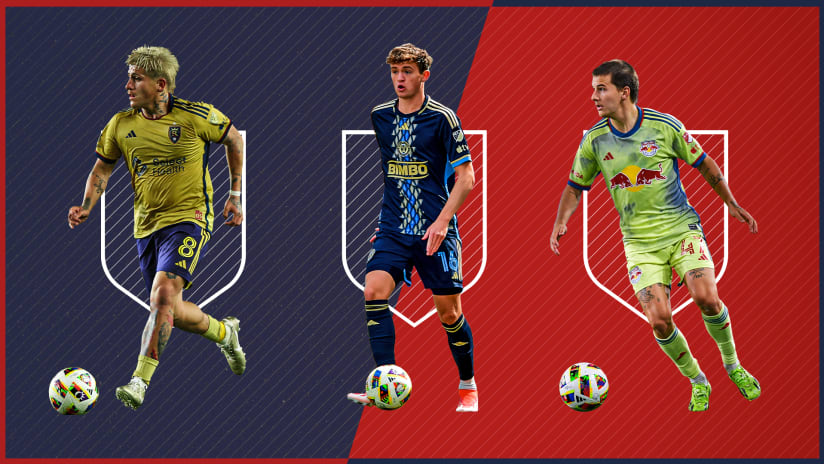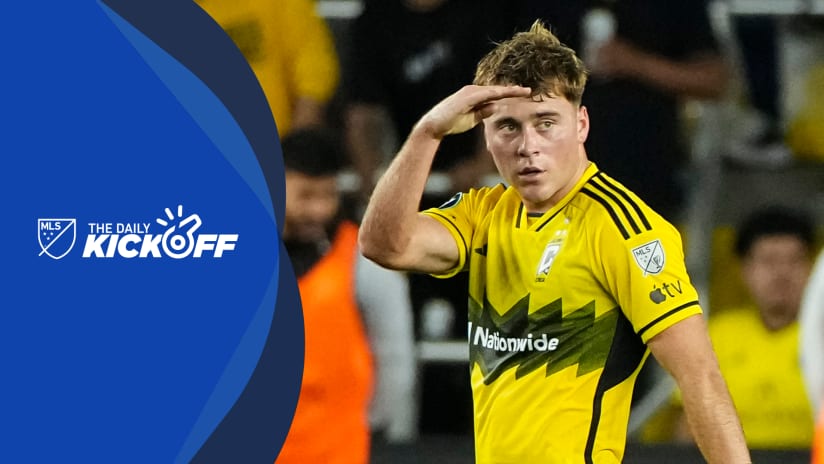The first round of Conference Semifinal action is over, and what a round it was. Real Salt Lake stunned MLS by putting up a 3-0 win against the second-seeded Seattle Sounders, the Colorado Rapids seem to have lost their entire squad due to injury while going down 2-0 to Sporting Kansas City, and the LA Galaxy and Houston Dynamo both picked up victories on the road by a one-goal margin. The question is: What happens next?
1. What are each team’s odds for advancement in the playoffs?
| Home Teams' Margin of Victory in the Regular Season | |
| Margin | Percent of Total |
| +6 | 0.1% |
| +5 | 0.6% |
| +4 | 2.3% |
| +3 | 6.8% |
| +2 | 13.7% |
| +1 | 24.2% |
| 0 | 26.7% |
| -1 | 15.8% |
| -2 | 6.5% |
| -3 | 2.3% |
| -4 | 0.9% |
| -5 | 0.1% |
| -6 | 0.0% |
| -7 | 0.1% |
With the first round of the conference semifinals in the books, four teams are staring a deficit in the face heading into the second leg. Of those teams, only the Seattle Sounders have the luxury of hosting the second game, though they also have the largest hill to climb at three goals down. How long are the odds for the trailers to come back and win?
The Sounders need to win by at least three tonight in what will be their 48th competitive game of the year, tying the 2008 Houston Dynamo for the most by an MLS team. There aren’t a ton of playoff data to work with, since there are only four two-legged series per season. As a matter of fact, Real Salt Lake’s win on Saturday was the first by a margin of three goals or more in an opening leg since the current playoff format was adopted in 2003. However, there have been plenty of regular season games to give us an idea of how common wins by each margin of victory are.
Of the 3,054 regular season games in MLS history, only 93 have ended with a four-goal win for the home team, or 3 percent. There have also been 207 games with a three-goal home win, which would even the series for Seattle. That’s another 6.8 percent, but those can’t all be considered series wins due to the necessity of extra time and possibly penalties.
If you take into account all results after 90 minutes (that is, results not involving shootouts or overtime), in MLS the home team ends up winning 47.7 percent of the time, losing 25.6 percent and drawing 26.7 percent. Counting draws as half a win and half a loss, so the home winning percentage is right at 61 percent.
Using that percentage, let’s say the home team wins 61% of the series that go to extra time. That means Seattle’s overall chances of winning are 3 percent plus 61 percent of 6.8 percent, which comes out to a total of 7.2 percent. Ouch.
But the Sounders aren’t actually the longest shot; that would be the Colorado Rapids. Heading on the road down by two goals, their odds are even lower at only 5.8 percent.
| 2011 MLS Playoffs: Odds of Advancing | ||||
| Home Team | Odds to Advance | Odds to Advance | Away Team | |
| SKC | 94.2% | vs. | 5.8% | COL |
| HOU | 84.0% | vs. | 16.0% | PHI |
| LA | 84.0% | vs. | 16.0% | NY |
| LA | 84.0% | vs. | 16.0% | NY |
| SEA | 7.2% | vs. | 92.8% | RSL |
Keep in mind these odds don’t consider the quality of the two teams. It also doesn’t account for any injuries or suspensions. With RSL’s Nat Borchers and Jámison Olave injured and uncertain for leg two, and Seattle being the higher seed, their chances are likely higher than stated. Meanwhile, those same factors would seem to make the Rapids an even longer shot.
Of course, the MLS Cup Playoffs have seen many unlikely comebacks in the past. Using this methodology, the two biggest upsets entering game two were San Jose over New York last year and Colorado over Dallas in 2006. As away teams down a goal, they were in the same boat as New York and Philadelphia this season, at 16 percent.
2. How does the 2003 SJ-LA miracle stack up?
It wouldn’t be right to talk about playoff comebacks without mentioning “that” game. For those wondering, San Jose kicked off their 2003 playoff match against Los Angeles started with an 18.6 percent chance to go through. The Earthquakes started the night down two goal on aggregate, but their deficit against the visiting Galaxy doubled just 13 minutes in. Somehow, they then managed to pull off the greatest comeback in MLS history by scoring four consecutive times to push the game into extra time, where they quickly won on a Golden Goal.
Using the odds of any home team making up a margin of four goals or more between the 13th to the 90th minute, San Jose’s chances to advance were down to 1.52 percent when the Galaxy scored their fourth goal. One minute before the first Quakes goal, it hit a low point at 1.39 percent. To put it in perspective, that’s even smaller than the St. Louis Cardinals' recent comeback in game six of the World Series, where they twice came one strike away from elimination. Trailing 7-5, St. Louis’ chance at a comeback for the series was down to 2 percent after the first out of the bottom of the ninth.
3. How do the MLS Cup playoff winners compare to those in Mexico?
It’s easy to compare the American and Mexican soccer leagues, due to the end-of-season playoffs held in both.
| 2011 MLS Playoffs: Odds of Advancing | ||
| MLS | Mexico | |
| Higher Seed | 59% | 59% |
| Higher GD | 66% | 55% |
But there are differences. In Mexico, they use two legs for each round and the higher seeded team advances if the series is tied. Still, there’s a direct parallel with the two-legged series to decide the quarterfinals.
With the split season south of the border, they’ve played 17 playoff tournaments since MLS switched to the current format in 2003. In those quarterfinal series, the higher seeded teams have advanced 59 percent of the time – the exact same number as in MLS.
However, the team with a higher goal differential hasn’t advanced quite as often in the Primera Division. That’s likely due to the half season goal differentials being smaller and also not as representative of a team’s true strength.













